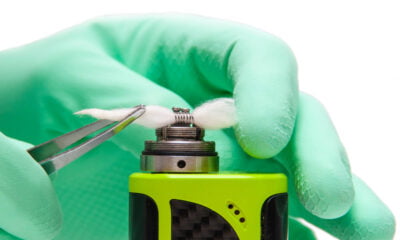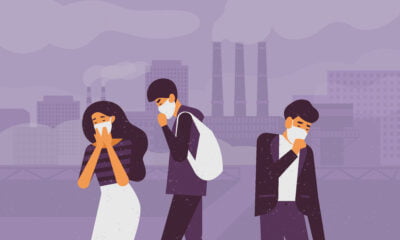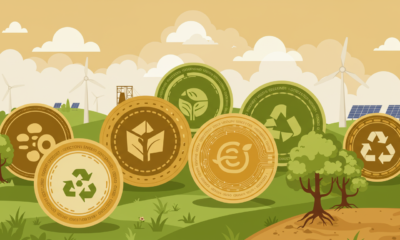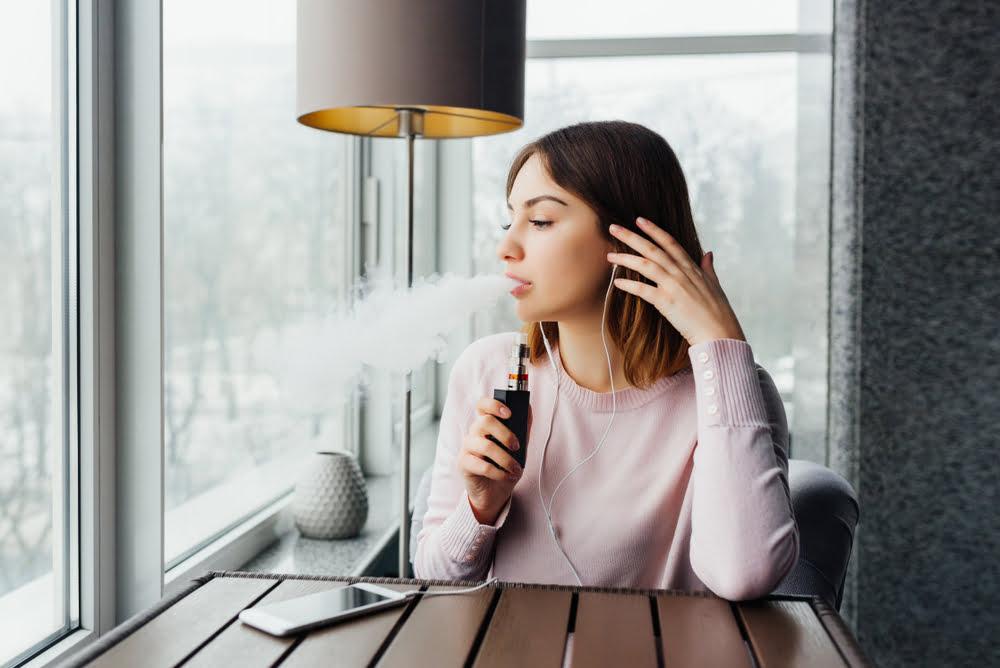
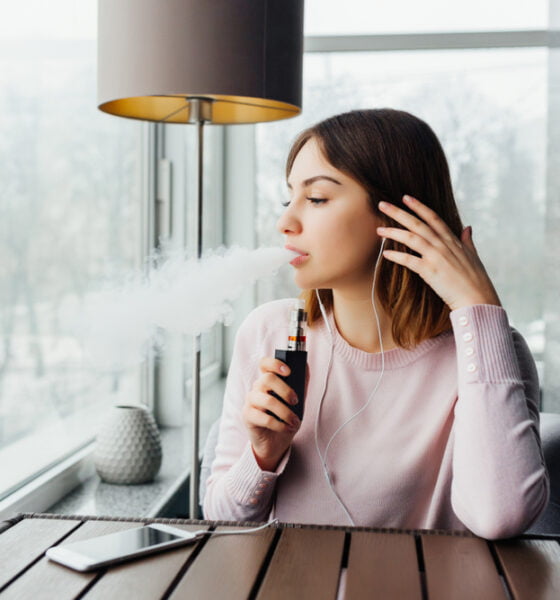
Features
Clearing the Air: Youth Vaping and its Impact on the Ozone Layer
There are growing concerns about ozone pollution. A lot of issues contribute to this problem and vaping is one of them.
Well. It’s better than smoking. That’s the first thought of any parent who has ever found a vape in their teen’s room. It’s a true enough statement—though one would do well to remember that most things seem healthy compared to a cigarette.
Long-term findings on the health effects of vaping are murky. We know that they are just as addictive as cigarettes. We know that they contain harmful chemicals. We know that some people have experienced vaping-related lung damage.
Is vaping also bad for the environment? It turns out, there are several ways in which vaping can put a hurt on the ozone layer. We talked about some of the problems with rising ozone levels.
We mentioned that there are some eco-friendlier ways to vape, but they are not perfect. In this article, we will take a look at the environmental impacts of vaping.
The Dangers of Vaping
Vaping gained rapid popularity on the premise that it wasn’t as dangerous as cigarettes. This is actually true. There are far fewer known carcinogens in a vape than there are in traditional tobacco products. However, this premise fails to account for several other factors that emerged in the wake of the vaping boom:
- People consider vaping a long-term option: Traditionally, when people quit cigarettes they might wean themselves off through nicotine gum or patches. However, the ultimate objective was usually to live a nicotine/tobacco-free life. Vapers, however, often use their devices as a permanent solution, trading one vice for another.
- People who never smoked vape: Vaping is better than smoking, but not better than avoiding nicotine altogether. People—particularly youths—have adopted vapes as a recreational device, even when they never smoked, to begin with. While this might not be as bad as picking up a pack of cigarettes, it still does have negative long-term health impacts.
- It’s addictive: As mentioned previously, vapes contain nicotine, the highly addictive drug that makes cigarettes so hard to quit. What does vaping do to the brain? Well, because of its high nicotine content, it can create a wide range of mental health issues in users. These include anxiety, impulse control, moodiness, and even a diminished ability to process information.
Naturally, these consequences are bad for anyone but are perhaps particularly dangerous in teenagers, who are still years removed from having fully formed brains.
People sometimes overemphasize certain vaping risks in a way that dilutes the real issue. For example, the “popcorn lung,” problem.
It is true that, several years ago large quantities of vapers experienced acute lung damage. These results were ultimately found to have been brought about by unregulated, black-market vape cartridges.
Why does this distinction matter? Because it’s the sort of information that smug teenagers love. Can’t you imagine your teen rolling their eyes when you cite lung damage as a reason they should stop vaping?
“Popcorn lung? You mean bronchiolitis obliterans?”
You blink, unsure.
They continue. “Mom, there’s no link between vaping and increased rates of chronic lung damage.” This hypothetical teenager would be correct. Quite possibly the reason for this is simply that we don’t have truly long-term studies on vaping yet. It hasn’t been around for long enough.
We do know that vape cartridges are full of chemicals that don’t belong in your lungs. Emphasize that. It’s scary enough in its own right.
What Pediatric Healthcare Professionals Say About the Issue
Naturally, pediatric healthcare professionals are not on board for the youth vaping movement. Remember that the healthcare trend of the last few decades has been to move away from youth nicotine and tobacco use. For years, smoking was stigmatized in a way that kept even substance-curious teenagers away.
Vaping, primarily through marketing initiatives, removed that stigma. Pediatrician Lindy McGee writes, “ had several patients tell me, “But I’m just vaping flavored water.” Suddenly, I found myself treating a 17-year-old patient who came to me after hospitalization from a lung injury due to vaping, a 16-year-old patient who woke up with headaches every morning because he was going into nicotine withdrawal every night, and a 15-year-old patient who asked me what I thought about these new Zyn nicotine pouches.”
If you are having a hard time explaining your vaping concerns to your teenager, bring in a pediatric doctor or nurse. They will be happy to make a more scientific case to your teenager about why vaping is a bad idea.
Is Vaping Bad for the Environment?
One aspect of the vaping question that often isn’t thoroughly examined is what sort of impact it has on the environment. Is vaping a personal decision, or an issue that has a very direct impact on public health?
In the next couple of headings, we examine how vaping may be having a broader impact than many people realize on the environment.
Battery Disposal
Vape batteries consist of lithium-ion— a hazardous substance that can cause fires, dangerous chemical run-off, and even explosions. Consequently, when you are done with a vape battery, you are not supposed to just throw it away in your household trash.
Proper disposal procedure dictates that you either take it to a specialized recycling facility or a hazardous waste facility.
Do most people do this? While there are no studies to indicate what percentage of vape batteries wind up in landfills, the odds don’t favor proper disposal habits. For one thing, it’s not very convenient to make the trip over to a specialized facility any time you need a new vape battery.
You can bet with reasonable confidence that teen vapers definitely aren’t going to special efforts to properly dispose of their vape batteries.
The other issue? Both hazardous waste facilities and specialized recycling facilities charge fees.
Of course, many vapers simply don’t know that you are supposed to take special precautions in battery disposal. Consequently, many wind up in locations that are bad for the environment.
Air Pollution
The substances vaping produces are also considered toxic from an environmental perspective. Nicotine is considered dangerous to animals, including humans when breathed in secondhand or absorbed through the skin.
For this reason, many public locations ban vaping the same way that they do traditional nicotine use.
Single-use Plastic
Finally, many vapes rely on single-use plastics. This is particularly true of products that use cartridges. This can lead up to a substantial build-up of plastic in landfills, which can consequently have a dangerous impact on wildlife.
Are There Any Situations Where Vaping is Ok?
While the environmental impacts of vaping are present regardless of what other reason a person takes up the hobby, there may be certain situations where vaping is an acceptable personal health decision. Most experts agree that vaping should not be considered a safe long-term substitution for smoking.
In other words, someone who might have spent the next thirty years smoking shouldn’t simply swap out cigarettes for a vape and call it a day.
However, some health professionals do believe that it can be used as a could transition device. A way to ween yourself off of smoking or nicotine-related products altogether.
While vaping is safer than smoking, it still contains many chemicals that could cause cancer or other long-term respiratory issues. For these reasons, most experts recommend a cautious, conservative attitude toward vaping. Even if vapes aren’t as bad as cigarettes, they can establish dangerous habits in youths and adults, all while taking a toll on the environment.


 Environment9 months ago
Environment9 months agoAre Polymer Banknotes: an Eco-Friendly Trend or a Groundswell?

 Environment11 months ago
Environment11 months agoEco-Friendly Home Improvements: Top 7 Upgrades for 2025

 Features8 months ago
Features8 months agoEco-Friendly Cryptocurrencies: Sustainable Investment Choices

 Features10 months ago
Features10 months agoEco-Friendly Crypto Traders Must Find the Right Exchange




